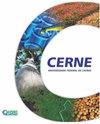Potential distribution of two lynx species in europe under paleoclimatological scenarios and anthropogenic climate change scenarios
IF 0.7
4区 农林科学
Q3 FORESTRY
引用次数: 2
Abstract
ABSTRACT Background: Today’s European fauna was formed under the influence of Paleoclimatic change. The distribution of two wild cat species of Europe, Lynx pardinus and Lynx lynx, 22,000 and 6,000 years ago were determined by the MaxEnt method in relation to the Paleoclimatological scenarios (LGM and Mid-Holocene) and fossil records. Then, the current climate conditions and their distributions under the effect of anthropogenic climate change scenarios were analyzed with the current existence records. Results: It was determined that these two wild cats were distributed according to preys on which they specialized, rather than the climate change that lasted for thousands of years. It was observed that Lynx Pardinus, which specialized only on European rabbit hunting, could not expand its distribution from past to present. Lynx lynx, on the other hand, expanded its distribution throughout the Palearctic region and adapted to different ecosystem varieties by means of its specialization on many preys from mouse to moose. Based on the climate envelope model results created with the help of MaxEnt which considers anthropogenic climate change scenarios (RCP2.6, RCP4.5, RCP6.0 and RCP8.5 2070) and today’s data of two existing Lynx species, suitable habitats for L. pardinus will decrease and suitable habitats will emerge in Western France. L. lynx, on the other hand, will limit its wide distribution to the North, except for the Alps, the Carpathians and the Caucasus, which will serve as refugial areas. Conclusion: These results therefore require that measurements such as reducing climate change impacts over the next 50 years, protecting existing and potential habitats in advance, and reducing anthropogenic impact should be enforced.古气候情景和人为气候变化情景下欧洲两种猞猁的潜在分布
背景:现今欧洲的动物群是在古气候变化的影响下形成的。利用MaxEnt方法,结合古气候情景(LGM和中全新世)和化石记录,确定了22000年和6000年前欧洲两种野猫(山猫和山猫)的分布。在此基础上,结合现有气候记录,分析了当前气候条件及其在人为气候变化情景影响下的分布。结果:确定这两种野猫的分布是根据它们专门捕食的猎物,而不是持续数千年的气候变化。人们观察到,只专门捕猎欧洲兔子的猞猁不能从过去扩展到现在。另一方面,山猫通过专门捕食从老鼠到驼鹿等多种猎物,扩大了其在古北地区的分布,并适应了不同的生态系统品种。基于MaxEnt建立的考虑人为气候变化情景(RCP2.6、RCP4.5、RCP6.0和RCP8.5 2070)的气候包膜模型结果和目前两种现有猞猁的数据,法国西部适宜猞猁栖息地将减少,适宜栖息地将出现。另一方面,猞猁将限制其广泛分布在北方,除了阿尔卑斯山脉、喀尔巴阡山脉和高加索地区,这些地区将成为避难所。结论:因此,这些结果要求在未来50年内采取诸如减少气候变化影响,提前保护现有和潜在栖息地以及减少人为影响等措施。
本文章由计算机程序翻译,如有差异,请以英文原文为准。
求助全文
约1分钟内获得全文
求助全文
来源期刊

Cerne
农林科学-林学
CiteScore
1.60
自引率
0.00%
发文量
2
审稿时长
6-12 weeks
期刊介绍:
Cerne is a journal edited by the Federal University of Lavras, Minas Gerais state, Brazil, which quarterly publishes original articles that represent relevant contribution to Forestry Science development (Forest ecology, Forest Management, Silviculture, Technology of Forest Products).
 求助内容:
求助内容: 应助结果提醒方式:
应助结果提醒方式:


